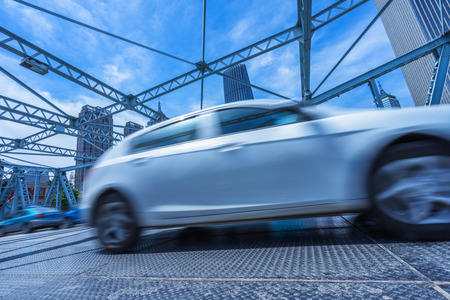1. Introduction to Self-Driving Cars and Smart Cities
Self-driving cars, also known as autonomous vehicles, are changing the way Americans think about transportation. These high-tech vehicles use sensors, cameras, artificial intelligence, and advanced software to drive themselves with little or no human input. While self-driving cars once seemed like science fiction, companies across the U.S.—including Tesla, Waymo, and General Motors—are already testing and developing them on American roads.
What Are Smart Cities?
Smart cities use technology and data to improve city life. This includes everything from smart traffic lights that adjust based on real-time traffic, to apps that help you find parking spots faster. In the U.S., cities like New York, San Francisco, and Austin are leading the way by investing in connected infrastructure, public Wi-Fi, energy-saving streetlights, and more. The goal is to make urban living safer, easier, and more efficient for everyone.
The Growing Connection: How Self-Driving Cars Fit into Smart Cities
The future of transportation is all about integration. As cities become smarter, they create the perfect environment for self-driving cars to succeed. For example, a smart city’s sensors can talk directly to autonomous vehicles, sharing information about traffic jams or road hazards in real time. This not only helps self-driving cars operate safely but also makes commutes smoother for everyone.
Key Features: Autonomous Vehicles vs. Smart Cities
| Autonomous Vehicles | Smart Cities |
|---|---|
| Drive themselves using AI and sensors | Use data and tech for better urban living |
| Reduce human error in driving | Improve traffic flow with smart systems |
| Can communicate with other vehicles (V2V) | Connected infrastructure (traffic lights, sensors) |
| Aim for safer roads and fewer accidents | Focus on sustainability and efficiency |
Together: A Smarter Future for American Cities
As both self-driving cars and smart cities continue to evolve in the U.S., their connection will only get stronger. By working together, these technologies have the potential to reshape how we get around—making transportation safer, more convenient, and better for everyone who calls America’s cities home.
2. The Technology Behind Self-Driving Cars
Understanding the Core Technologies
Self-driving cars are not just regular vehicles with a computer slapped on top—they rely on a combination of advanced technologies working together to make safe decisions on the road. Let’s break down the main components that power autonomous vehicles, especially as they’re being developed for American roads and regulations.
Sensors: The Eyes and Ears of Autonomous Vehicles
Self-driving cars use a mix of sensors to “see” their surroundings, much like humans use eyes and ears. These include:
| Sensor Type | What It Does | How It Helps on U.S. Roads |
|---|---|---|
| Lidar | Uses lasers to create a 3D map of surroundings | Accurately detects other vehicles, pedestrians, and obstacles in busy cities or highways |
| Radar | Senses objects by bouncing radio waves off them | Works well in poor weather (rain or fog), essential for America’s diverse climates |
| Cameras | Capture images for object recognition and traffic sign reading | Reads American road signs, lane markings, and traffic lights, which vary by state |
| Ultrasonic Sensors | Detects objects up close, like during parking maneuvers | Helps navigate tight urban spaces and crowded parking lots common in cities like New York or Los Angeles |
Artificial Intelligence (AI): The Brain Power
The heart of self-driving tech is Artificial Intelligence. AI takes all the data from sensors and makes split-second decisions—when to brake, accelerate, turn, or yield. In America, this means understanding local driving habits, interpreting complex intersections, and handling unexpected events like construction zones or emergency vehicles.
Connectivity: Staying Linked to Everything Around
Self-driving cars constantly communicate—not just with other cars but also with infrastructure. This includes:
- Vehicle-to-Vehicle (V2V) Communication: Sharing speed, direction, and location with nearby cars helps prevent accidents at busy American intersections.
- Vehicle-to-Infrastructure (V2I) Communication: Receiving real-time updates from traffic signals or road sensors keeps the ride smooth through city streets or interstate highways.
- Cloud Connectivity: Accessing maps and software updates over the internet ensures cars stay current with route changes and new regulations across different U.S. states.
Why Tailoring Tech for America Matters
The United States has unique road conditions—from wide multi-lane freeways to narrow suburban streets—and rules that can change from one state to another. Self-driving car technology must adapt to:
- Diverse weather conditions like snow in Minnesota or hurricanes in Florida.
- A wide variety of road layouts found across major cities and rural areas.
- Specific traffic laws and signage that differ between states like California and Texas.
This tailored approach ensures that self-driving cars will fit seamlessly into America’s complex transportation system while keeping everyone safe on the road.

3. Smart City Infrastructure: The Backbone for Autonomous Vehicles
For self-driving cars to safely and efficiently navigate our cities, we need more than just advanced vehicles—we need smart city infrastructure. This means our roads, traffic systems, and communication networks must work together seamlessly with autonomous technology. Let’s break down the essential upgrades that will make this future possible.
Connected Traffic Lights and Intersections
Traditional traffic lights simply change color on a timer or respond to basic sensors. In a smart city, these lights are connected to a network. They can “talk” directly to self-driving cars, sending real-time updates about when lights will change or if there’s an emergency vehicle approaching. This helps cars make better decisions and reduces traffic jams and accidents.
The Power of 5G Networks
Autonomous vehicles rely on fast, reliable data. That’s where 5G comes in. With much higher speeds and lower latency than older networks, 5G lets cars send and receive information instantly—from mapping updates to hazard alerts. This keeps self-driving cars connected not only to the cloud but also to each other and city infrastructure.
Comparing Network Needs
| Network Type | Speed | Latency | Use in Self-Driving Tech |
|---|---|---|---|
| 4G LTE | Moderate | High | Basic navigation, limited real-time response |
| 5G | Very High | Very Low | Instant updates, vehicle-to-everything (V2X) communication |
Data-Sharing Platforms for Safer Streets
A smart city doesn’t just collect data—it shares it responsibly between vehicles, infrastructure, and city planners. Data-sharing platforms allow self-driving cars to learn about road closures, accidents, or heavy traffic ahead. This makes routes safer and more efficient for everyone.
How Data Flows in a Smart City:
- Sensors: Gather info from roads, weather stations, and buildings.
- Cities: Process this info and share updates with vehicles.
- Cars: Use shared data for safer driving decisions and send new data back into the system.
The bottom line: Upgrading city infrastructure with connected traffic systems, robust 5G networks, and open data platforms is crucial for making self-driving cars a reality on American roads.
4. Mutual Benefits: How Self-Driving Cars and Smart Cities Complement Each Other
Insight into Improvements from U.S. Pilot Programs
Self-driving cars and smart cities are a natural fit, each making the other better. Across the United States, pilot programs are showing how these technologies work together to improve daily life for everyone. Let’s break down some of the main benefits we’re already seeing.
Traffic Safety Gets a Boost
One of the biggest promises of self-driving cars is safer roads. In cities like Phoenix and San Francisco, autonomous vehicles have been tested on public streets with impressive results. These cars don’t get tired or distracted, and they follow traffic rules exactly as programmed. When combined with smart city infrastructure—like connected traffic signals that communicate directly with vehicles—we see fewer accidents and faster emergency response times.
Reduced Congestion in Busy Areas
Traffic jams are a headache for everyone. Smart cities use sensors and data analysis to manage traffic flow, and self-driving cars can react instantly to changes in road conditions or detours. Together, they help keep things moving smoothly—even during rush hour.
| Benefit | How It Works | Example from U.S. Pilots |
|---|---|---|
| Fewer Accidents | Real-time communication between cars and infrastructure | Phoenix’s Waymo pilot showed lower incident rates |
| Less Congestion | Adaptive traffic signals guiding autonomous vehicles | Pittsburgh’s smart traffic lights cut travel time by 25% |
| Better Accessibility | On-demand rides for people who can’t drive | Las Vegas robotaxi service helps seniors & disabled riders |
| Lower Emissions | Smoother driving and less idling at red lights | Austin’s AV fleet reduced CO2 output on test routes |
Enhanced Accessibility for All Americans
For people who don’t drive—whether because of age, disability, or choice—self-driving cars open new possibilities. In several U.S. cities, pilot programs have focused on helping seniors and those with mobility challenges get around more easily. Smart city apps make it simple to book rides when needed, connecting folks to healthcare, groceries, and social events without hassle.
Positive Environmental Impacts
Smoother traffic means less stop-and-go driving, which burns extra fuel. Plus, many autonomous vehicles are electric or hybrid models. In places like Austin and Columbus, early tests show that integrating self-driving cars with smart city tech leads to cleaner air and lower emissions overall—a win for both residents and the planet.
The Bottom Line: A Stronger Partnership Ahead
The partnership between self-driving cars and smart cities is already delivering real benefits in U.S. pilot programs. As technology keeps evolving, we can expect even greater improvements in safety, efficiency, accessibility, and sustainability across American communities.
5. Key Challenges and the Road Ahead
Privacy Concerns in Smart Cities and Self-Driving Cars
As self-driving cars become more common in American cities, they will collect huge amounts of data about people’s locations, driving habits, and even personal preferences. Smart city systems will also gather information to improve traffic flow, parking, and public safety. This raises important questions: Who owns this data? How can it be protected from misuse? Many Americans worry about their privacy, so city planners and tech companies need to create clear rules about data collection, sharing, and storage.
Cybersecurity Risks
Self-driving cars rely on complex software and constant communication with other vehicles and city infrastructure. If hackers break into these systems, it could lead to dangerous situations like accidents or traffic jams. Keeping these networks secure is a top priority. Companies are working on strong encryption methods and quick-response systems to spot threats before they cause harm.
Policy and Regulation Challenges
Making new laws for self-driving cars and smart cities isn’t easy. Federal, state, and local governments must work together to set standards for safety, insurance, liability, and road use. The rules can vary from one state to another, which sometimes slows down innovation. Policymakers need to balance encouraging new technology while keeping people safe on the roads.
Public Acceptance and Trust
Many Americans are still unsure about riding in a car with no driver or trusting computers to control city streets. Building public trust is crucial for success. Companies must show that self-driving cars are safe by sharing test results and being transparent when problems occur. Education campaigns can help people understand the benefits—like fewer accidents and better mobility for everyone.
Main Challenges at a Glance
| Challenge | Description | Impact in the U.S. |
|---|---|---|
| Privacy | Protecting personal data collected by vehicles and city sensors | High concern among citizens; requires strict guidelines |
| Cybersecurity | Preventing hacking of vehicles and infrastructure | Critical for public safety; needs constant updates |
| Policy & Regulation | Setting unified rules across states and cities | Can delay deployment if not coordinated well |
| Public Acceptance | Convincing people to trust new technology | Affects adoption rate; education is key |
The Future Outlook: What’s Next?
The journey toward fully integrated self-driving cars and smart cities in America is just beginning. As technology advances, solutions to today’s challenges will keep improving. We can expect new partnerships between automakers, tech companies, government agencies, and local communities. With the right balance of innovation, policy updates, and public engagement, self-driving cars could soon be a regular part of daily life in American smart cities.


